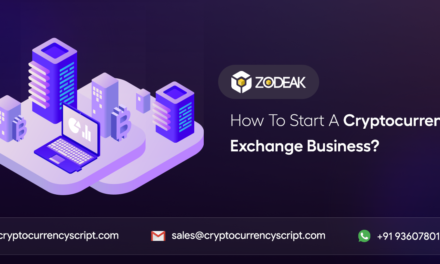Why should you join cryptocurrency mining pools? This question unveils an infinite number of exciting opportunities. First off, you probably know that mining cryptocurrency can be very profitable, but it is not a simple task by any means.
How can you make this easier?
This is where the mining pools come into play. A cryptocurrency mining pool can help you earn rewards by increasing your chances of mining blocks.
Want to know how you can join in? Well, keep on reading, because this is your ultimate roadmap that will guide you through everything you need to know, from understanding mining pools to setting up and joining one successfully.
Understanding Cryptocurrency Mining Pools
- A crypto mining pool is where generally a group of miners connect and use their combined computational power to successfully mine blocks together.
- This collaboration empowers them to split the mining rewards based on how much each individual contributed.
Why Join Cryptocurrency Mining Pools?
- First and foremost, joining a mining pool provides steady pay, which you cannot obtain by mining on your own, as pay can be unpredictable.
- Successful mining demands high-end hardware, which can be expensive. Thus, joining a mining pool increases your chances and allows you to mine without powerful equipment.
- New miners entering the crypto world may find it confusing, but since mining pools frequently include an online community and support, they can learn all the ins and outs of mining.
Guide to Joining Cryptocurrency Mining Pools
- Understand the pool type
- Choose the right pool
- Install Your Mining Hardware and Software
- Connect to and Adjust Your Mining Pool
- Refine the process
- Withdraw your Earnings
Now, let’s look at them in detail.
1: Understand the pool type
- Mining pools might come with different ranges of setups.
- Each offers different fee systems, transparency levels, and payout structures. So make sure to thoroughly understand and analyze them.
- Here are a few types to consider:
- Pay-Per-Share (PPS) Pools: Miners will be given a set amount for each share they contribute, regardless of whether the pool finds a block.
- Full-Pay-Per-Share (FPPS) Pools: This is identical to the PPS pool, but it also includes the block transaction fee, potentially increasing payouts per share submitted.
- Proportional Pools: When a block is found, miners receive a reward per their contribution, with larger payouts for larger contributions.
- Score-Based Pools: Rewards are time-weighted, with shares submitted closer to the block’s discovery receiving priority.
By being aware of these different kinds of pools, you can choose the one that best fits your mining goals and equipment.
2: Choose the right pool
- Choosing the best of cryptocurrency mining pools can make all the difference, as it can assist you in maximizing profits with lower fees.
- Here are some key factors to keep in mind when choosing a mining pool:
- Reputation and Reliability
- It is essential to look for a reputable mining pool with a positive reputation because they will pay you fairly for the work you have done.
- Because they are a well-known pool, they will also have security measures in place to prevent fraud.
- Fees and Payout Structure
- Joining a mining pool normally costs you from the range of 1% to 3% of your earnings.
- While lower fees could mean higher profits, it might also indicate a compromise on the pool’s reliability and reputation.
- If you want a consistent payout, consider joining a pool with a PPS or FPPS structure, which would offer pay for every share you submit.
- Geographical Location
- To reduce latency and increase mining efficiency, join a cryptocurrency mining pool with a server near your location.
- Transparency and Security
- Make sure the pool of your choice provides transparent records of fees, server performance, and earnings, as this strengthens its reputation as a dependable mining pool.
- Support for Your Cryptocurrency
- Ensure that the mining pool supports the cryptocurrency you want to mine.
- While Bitcoin is the most popular choice, some pools cater to altcoins like Ethereum and Litecoin.
- Reputation and Reliability
3: Install Your Mining Hardware and Software
Once you picked out your pool, then it is time to set up the hardware and install the software.
- Hardware requirements
- ASIC Miners: Best for mining bitcoins and other major cryptocurrencies.
- GPU: Effective for mining altcoins like Ethereum.
- Coolers: To cool down the setup and prevent overheating after long mining sessions.
- Software installation
- Pick the software: Choose mining software like CGMiner, BFGMiner, EasyMiner for Bitcoin, and PhoenixMiner for Ethereum that is compatible with your pool.
- Download: To avoid installing malware, download the software from their official websites or reliable sources.
- Configuring software
- Setup: Submit your wallet address, the server URL of the mining pool, and any additional account information that may be required.
- Guides Available: To make your process smoother, most pools offer guides to help you set up popular mining software.
4: Connect to and Adjust Your Mining Pool
- After downloading, sign up for an account and connect it to your crypto wallet to receive payouts.
- Create a worker ID for each mining device you connect to track your contributions.
- In the mining software, add the server information, worker ID, and any other settings as directed by the pool.
- After everything is set, launch the mining software. It will connect to the pool and display your contribution’s hash rate and earnings.
5: Refine the Process
- Once mining has begun, it is time to maximize your productivity.
- Track: Ensure the hash rate aligns with your hardware’s capabilities and monitor earnings to assess the pool’s performance.
- Adjust: Mining generates a lot of heat, so cooling and power settings must be adjusted to ensure smooth operation and hardware longevity.
- Optimize: To optimize hash rate, experiment with software settings such as overclocking and intensity adjustment, which are offered by many software programs.
6: Withdraw your Earnings
- Create an effective system to track and cash out your earnings as soon as you begin earning in cryptocurrency mining pools.
- Auto vs. Manual Payout Options
Several mining pools offer automatic payouts once a certain level is reached, providing regular income, while some also allow manual payouts to give you control over when you receive funds.
- Monitor earnings
Track mining expenses like equipment, maintenance, and electricity bills to estimate net profit. Tools like WhatToMine can help you make these estimates.
- Pick a safe wallet
Use hardware wallets like Ledger or Trezor for offline storage, or secure online wallets with two-factor authentication to store your earnings. Avoid storing large sums in the pool’s wallets.
Conclusion
Hope you found the necessary information to join cryptocurrency mining pools! You can be a miner and increase your earnings in the cryptocurrency space if you do your research, invest in the necessary equipment, and keep yourself updated. Aside from this, there is another option to make big bucks: starting your own exchange with a Cryptocurrency exchange script, which allows you to make money quickly without affecting the environment.
Contact a reputable firm like ours and begin your journey today!





